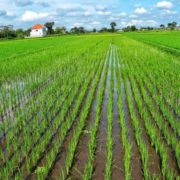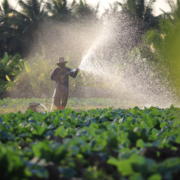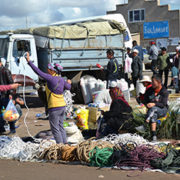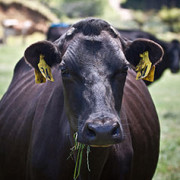Tag Archives | agriculture
Agriculture and natural resources, Climate change, Health
 Governance and public sector management
Governance and public sector management
 Agriculture and natural resources, Water
Agriculture and natural resources, Water
 Agriculture and natural resources, Economics, Water
Agriculture and natural resources, Economics, Water
 Agriculture and natural resources, Climate change
Agriculture and natural resources, Climate change
 Economics, Industry and trade, Regional cooperation and integration
Economics, Industry and trade, Regional cooperation and integration
 Agriculture and natural resources
Agriculture and natural resources

Evaluating G20 Commitments on Climate Change, Health, Well-Being, and Agriculture

The G20 has consistently emphasized its role as the premier forum for global economic cooperation, operating in the spirit of multilateralism and consensus.
Evaluating G7 Commitments on Climate Change, Health, Well-Being, and Agriculture

Accountability and transparency are fundamental principles of the G7.
Revitalizing South Asia’s groundwater resources with direct-seeded rice

Direct-seeded rice contributes to lower greenhouse gas emissions, benefiting the environment, and increasing farmers’ total income by reducing cultivation costs.
Managing water resources in agriculture can ensure food and water security

The unsustainable use of water resources in agriculture will have severe implications for future food and water security.
Autonomous adaptation: Community approaches to coping with climate change

Human activity is accelerating climate change, and those most at risk are vulnerable populations in developing countries that are already suffering from chronic poverty. These countries also tend to be ones that contribute only negligibly to climate change. The changing climate is waiting for no one—most of us have already experienced, read, or researched its impacts, and scientists have gravely warned of the consequences in the form of wildfires, droughts, floods, and landslides, among others.
Time for SMEs in CAREC to move beyond borders

One of the most daunting challenges for the countries participating in the Central Asia Regional Economic Cooperation (CAREC) program is how to create decent, sustainable jobs. For far too long, many CAREC countries have relied on the capital-intensive extractives sector to drive their economic growth. However, the slowing down of the global economic growth and reduced commodity prices resulted in the substantial increase in unemployment, especially among the youth.
New Zealand: A farming and services growth model for Asia?

The story of East Asia’s rapid growth includes ample reference to the export of technologically complex manufactured goods, such as cars and computers. This is the model that has characterized Japan, the Republic of Korea, and Taipei,China. It also provides an example for Asia’s current middle-income countries, including the People’s Republic of China (PRC). They need to develop high-value manufacturing, the argument goes, churning out domestically designed goods or linking into global production networks. Failure to move up the value chain may result in a country getting stuck in the middle-income trap (Zhuang et al. 2012).


Search
Subscribe / Connect to Asia Pathways
Subjects
- Accelerating Progress in Gender Equality
- Addressing Remaining Poverty and Reducing Inequality
- Agriculture and natural resources
- Capacity development
- Climate change
- Economics
- Education
- Energy
- Environment
- Finance and Innovation
- Finance sector development
- Gender
- Globalization and Economic Stability
- Governance and public sector management
- Health
- Industry and trade
- Information and Communications Technology
- Infrastructure
- Making Cities More Livable
- Miscellaneous
- Population
- Poverty
- Private sector development
- Regional cooperation and integration
- Sanitation
- Social development and protection
- Strengthening Governance and Institutional Capacity
- Subjects
- Transport
- Uncategorized
- Urban development
- Video Blog
- Water
Recent Posts
- From Crisis to Resilience: The Evolution of the Banking Sector in Asia and the Pacific
- Tariffs on the Table: What Could Be Asia’s Next Move?
- Investing in Childcare a Win for Women and the Economy
- Flush and Flourish: Upgraded Toilets Can Transform Lives in Rural Asia
- New Ways for Climate Finance and Development in Asia and the Pacific




Recent Comments